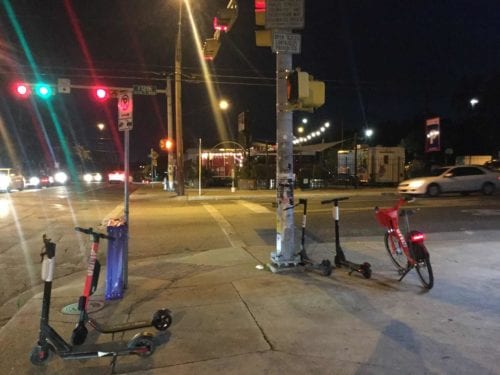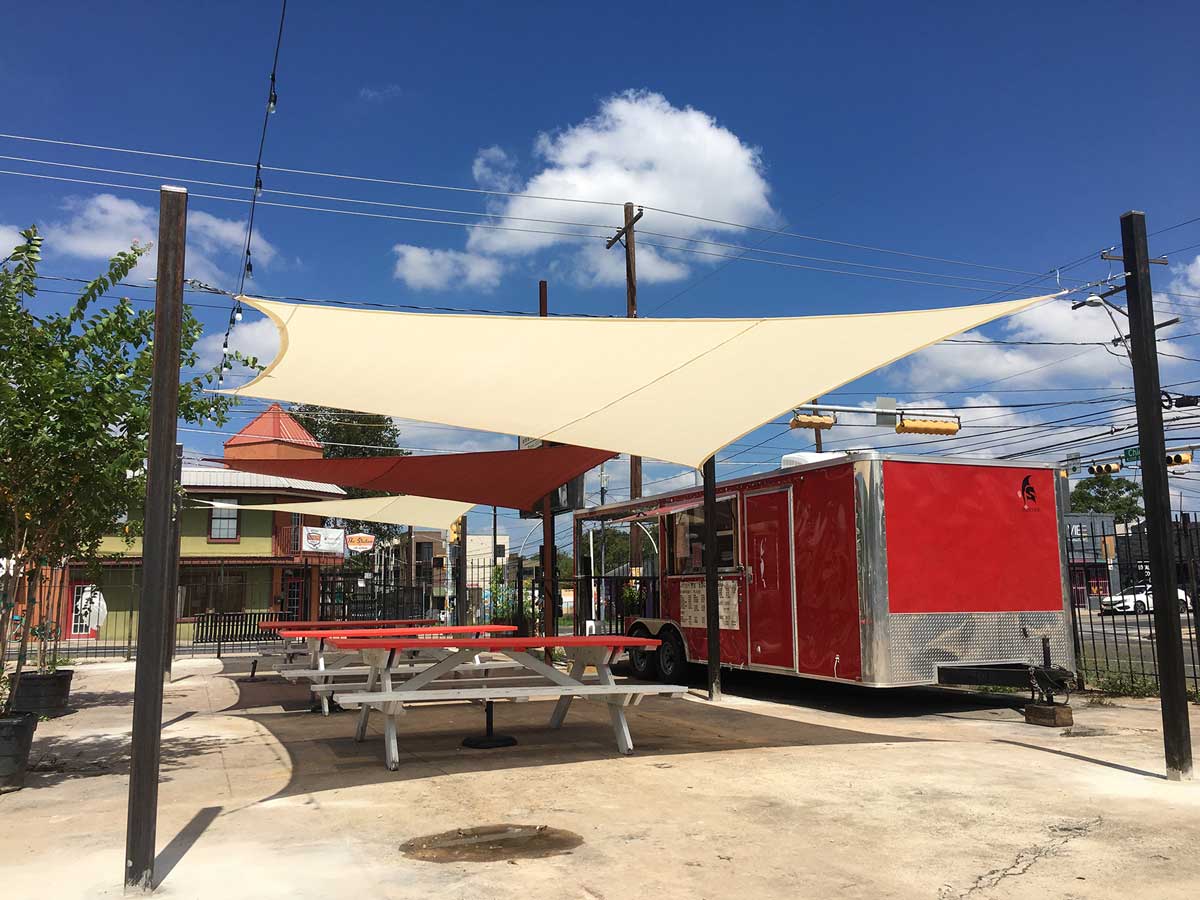
Reimagining the Urban Form: Austin’s Community Mobility Hub
With the arrival of the automobile, our cities began a century-long process of transformation through design practices that prioritize the use of personal vehicles. Cities widened once-walkable and vibrant streets into traffic arterials; they displaced entire neighborhoods to make way for highways; and they replaced countless acres of natural ecologies with parking lots. Although these methods were originally justified as a tool for reducing congestion, they most often worsened traffic, made public transit less viable and more difficult to use, and required the use of an automobile. Our dependence on automobiles has worsened public health, saddled cities with debt from massive infrastructure expenditures, disproportionately burdened low-income households with transportation costs that often account for the majority of household expenses, and contributed significantly to greenhouse gas emissions and pollution. Rocky Mountain Institute recently led a pilot project to tackle those problems.
The Community Mobility Hub
This past summer, with support from the Robert Wood Johnson Foundation, RMI launched a Community Mobility Hub pilot in Austin, Texas, to demonstrate a scalable approach to tackling the environmental, health, and equity impacts of our mobility system, including the urban design patterns that are so interconnected with it. This effort was influenced, in part, by the concept of mobility hubs in other cities, including Toronto, San Diego, and Austin, which tend to feature long-term infrastructure investments and high-capacity transit stations, along with traditional carshare and bikeshare.
RMI saw an opportunity to build on aspects of this existing approach by quickly introducing an array of experimental mobility services and urban space improvements in neighborhoods with little or no access to mobility services, high-frequency transit, or public gathering space. RMI’s recent report, Reimagining the Urban Form: Austin’s Community Mobility Hub, documents the pilot and its results.
The short-term goals of the pilot were to (1) provide or enhance walkable access to healthful food and social gathering space and (2) enhance access to—and user experience associated with—a variety of personal-car-alternative mobility services.
Improving 12th and Chicon
To identify a suitable location in Austin, the team developed selection criteria designed to ensure the Community Mobility Hub could meet its short-term goals and provide an applicable test case for other cities wishing to reduce emissions and pollution and enhance health and equity through improved urban spaces and new mobility services. The criteria included:
- Walkability and bike-friendliness
- Lack of high-frequency transit
- Demographic diversity
- Level of need to improve health
- Proximity to housing and businesses
Based on these criteria, the team ultimately selected the neighborhood in proximity to the intersection of E. 12th St. and Chicon St. in East Austin as the site for the pilot.
In collaboration with mobility service companies (including Capital Metro, Car2Go, JUMP bikes, Lime, Bird, and Lyft), an Austin-based public engagement firm (Public City), a number of community organizations (including Mission Possible, the 12th St. Merchant’s Association, and Six Square), global leaders in urban design and health (including Gehl, Gehl Institute, and Better Block), and the City of Austin, RMI designed and implemented a neighborhood-based access point for mobility, where public transit and new mobility services are readily available for use. Improvements to the site included the addition of two carsharing parking spots, a planned charging hub for JUMP’s electric bikes, more Lime and Bird electric scooters, discounted Lyft rides to and/or from the area, and more.
The team also introduced a number of urban space improvements intended to enhance the experience of accessing services and using the space around them. These included added shading, trees, a variety of plants, and food trucks to transform a space that had been largely dedicated to personal vehicles.
Pilot Results
RMI incorporated the use of Gehl Institute’s public space assessment methodology to conduct extensive community engagement, public surveys, direct observation, and desktop research. The team observed a 25 percent increase in walk trips; a more than doubling of “dwell time” (the amount of time people chose to spend in the area); a 39 percent decrease in automobile use; a decrease in reported transportation challenges in the area; and an improvement in mobility service user experience. The Community Mobility Hub launch also coincided with a citywide increase in use of shared e-scooters and bikes. The team ultimately found that Community Mobility Hubs contribute to reduced greenhouse gas emissions and pollution, reduced obesity and enhanced respiratory health, and enhanced mental health and well-being.
RMI’s Community Mobility Hub demonstrates a need and opportunity to activate surrounding areas with additional services and space improvements. The inclusion of the word “community” in RMI’s adaptation of the mobility hub was meant to reflect the importance of creating a context-sensitive and community-driven approach to transforming neighborhoods globally.
RMI’s approach can be adopted in neighborhoods globally to improve the health, emissions, and equity impacts of city design and how it interacts with personal mobility.
Download Reimagining the Urban Form: Austin’s Community Mobility Hub.
View the webinar Experimentation at the Interface of Urban Design and New Mobility: Environmental, Health, and Equity Implications for Cities
